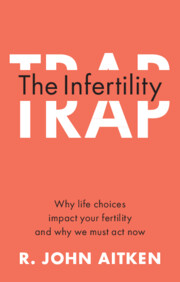Chapter 3
Published online by Cambridge University Press: 05 May 2022
Summary
Female fertility: hostage to affluence, age and the search for self-fulfilment In modern industrialized societies female fertility is compromised due to a perfect storm of social, economic, educational and political factors that far outweigh any attempt by Governments to encourage women to have more children. In affluent societies, there is no need to have a large family. Infant and childhood mortalities are low and children are not needed in the workforce to facilitate survival of the family unit. As a result of the reduction in family size, women are freed to pursue their educational and professional goals. This ultimately means that childbearing is postponed to the point that fertility goes into age-dependent decline, around the age of 35. Many women in this situation will look to the IVF industry for salvation, however live births decline with age following assisted conception just as they do in natural cycles. Oocyte donation and/or cryopreservation are the only realistic methods to address age-dependent female infertility at the present time, although even these techniques are far from infallible. As societies engage in the long march to affluence, we shall inevitably witness repeated collisions between the tectonic plates of female biology and our prosperity-driven quests for gender equality, longevity and fulfilment. Ultimately fertility is the victim.
- Type
- Chapter
- Information
- The Infertility TrapWhy life choices impact your fertility and why we must act now, pp. 54 - 131Publisher: Cambridge University PressPrint publication year: 2022



